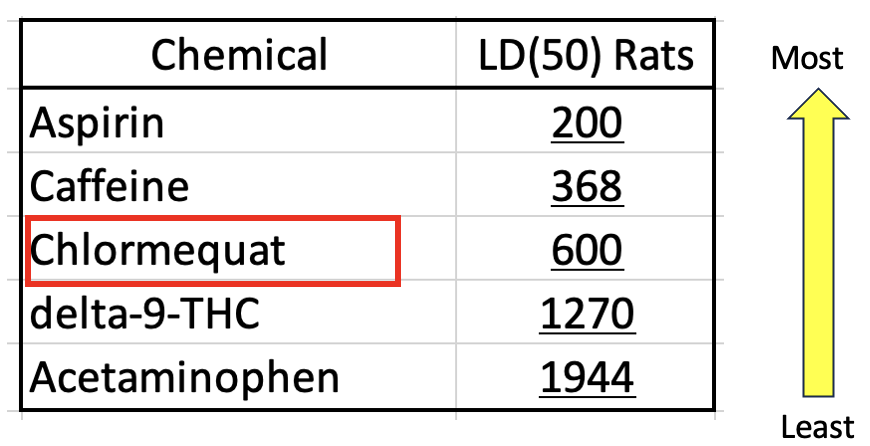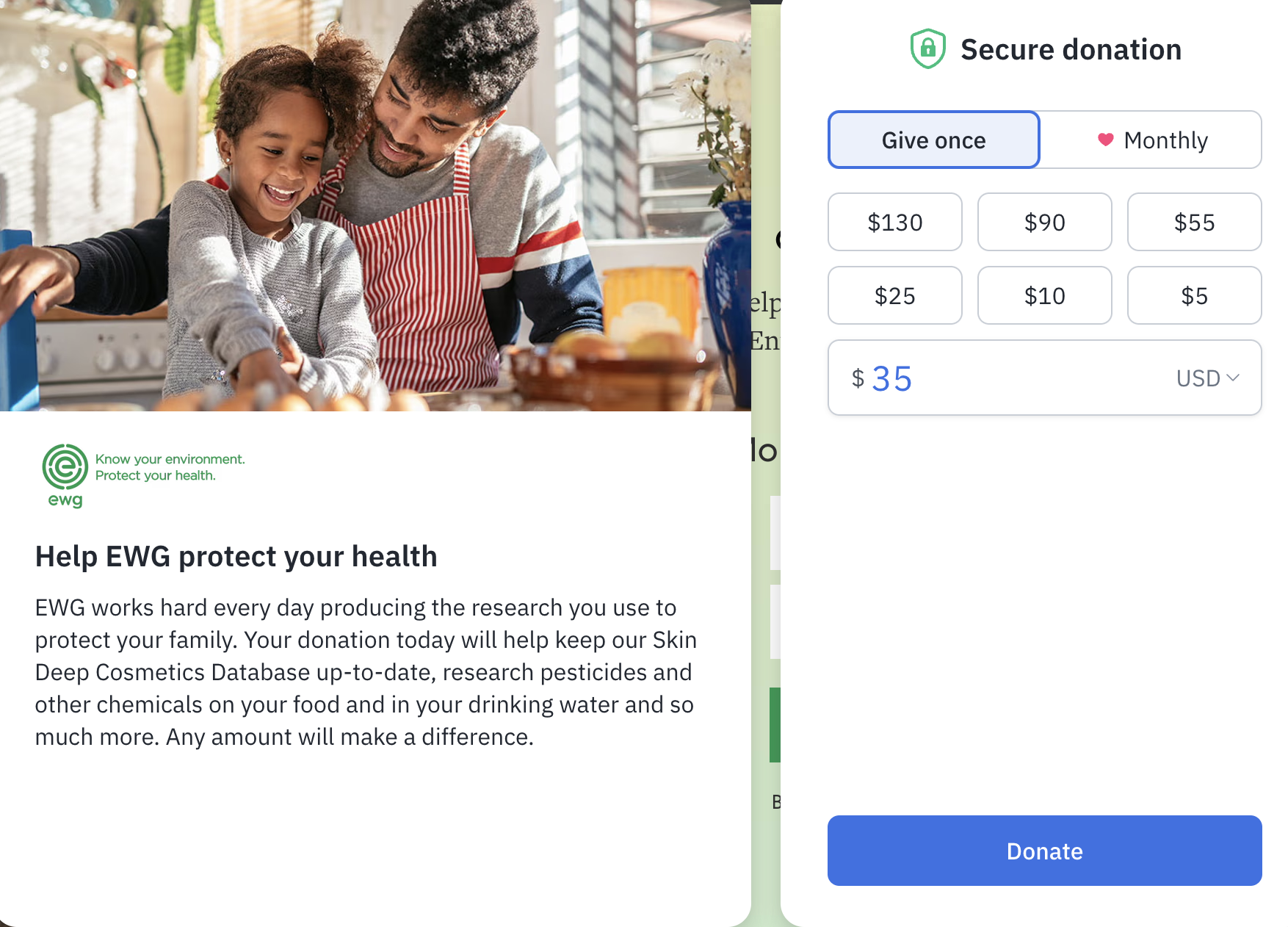A new month, a new chemical to fear. Such is the business plan of the Environmental Working Group, an organization that I've been saying unflattering things about for years. Why? Because it usually deserves it. Let's look at a just-released EWG video, which shows the kinds of tricks those guys have been using (and fooling us with) forever.

The Environmental Working Group (EWG) is at it again. Scare tactics with little behind them.
The latest example of EWG’s chicanery was when they put out a recent video about the dangers of a supposedly "new" pesticide called chlormequat aka chlormequat chloride, which is primarily used on oats. EWG simply loves to scare people. Scares = donations.
(EWG also recently published a paper on chlormequat chloride. I will be reviewing this soon.)
Meanwhile, let's see if we can't pick out a trick or two from the video. The following are screenshots from the video using the closed caption function.
Trick #1

Half of this is true. It is banned in the US. But is it really a toxic crop chemical? Table 1 (below) lists some common substances and their relative toxicity in rats.

Table 1. Comparison of LD50 values for chlormequat and four other common chemicals. The LD50 is the dose (measured in mg/kilogram body weight of the rat) required to kill 50% of the test animals. The lower the LD50 the more toxic the chemical. The following must be taken into account when interpreting the data: 1) The chemical is administered in a single oral dose, not chronically; 2) LD50 measures only acute toxicity, not long-term toxicity, organ damage, carcinogenicity, or reproductive toxicity, the primary concern, according to EWG. (delta-9-THC is just another way of describing THC, the psychoactive component in marijuana. Acetaminophen is the generic name for Tylenol.)
Furthermore, rats are not humans. LD50 values across different species give only an approximate ranking of toxicity. However, in general, very toxic chemicals in rats are also very toxic in a broad group of test animals and humans. Likewise, very non-toxic chemicals (e.g. salt) in rats are non-toxic in multiple species.
These data show that chlormequat's toxicity resides somewhere in the vicinity of aspirin, acetaminophen, caffeine, and THC. Is this really a toxic crop chemical?
Trick #2

As horrifying as this may sound, most of us, according to an EWG paper already (1) have traces of chlormequat in our urine. (I will be discussing the EWG paper in part 2.) Why? Because the chemical is approved for use on several common grains in Canada, the UK, and the EU. When it comes to chemical and food safety the EU is extremely careful, probably too much so. The EU (among others) uses something called the precautionary principle. ChatGPT:
The precautionary principle is a concept in decision-making that suggests if an action or policy has the potential to cause harm to the public or the environment, in the absence of scientific consensus, the burden of proof falls on those advocating for the action or policy to demonstrate that it is not harmful. In other words, if there is uncertainty about the potential risks, it is better to err on the side of caution rather than risking irreversible harm.
A human agrees.
One key difference is that historically the United States has been more insistent in focusing on the probability or likelihood of hazards or bad things occurring, and the European Union approach has been more precautionary; they give attention to not just probabilities of something going wrong, but also the mere possibility...That has resulted in the EU banning more additives than the United States.
Justin J. Kastner, PhD, associate professor in the department of diagnostic medicine and pathobiology at Kansas State University in Manhattan, in an article in Everyday Health
So, the EU, which is terrified of chemicals and GM foods, sunscreens, artificial colors, and flavors, and nuclear power (depending on the country), has been using chlormequat since it was approved 2009, yet the EWG wants us to believe that this "new" (nonsense, it was invented in 1962) super toxic (like caffeine and aspirin) substance is going to be poisoning our Cheerios so that our kids are going to grow up sterile and the world will cease to exist.
Woe is me! What can we do? Perhaps donate to EWG? Of course!

Next: A look at the science behind the scare.
NOTE:
(1) Part 2 will take a look at the EWG paper upon which this video is based.
